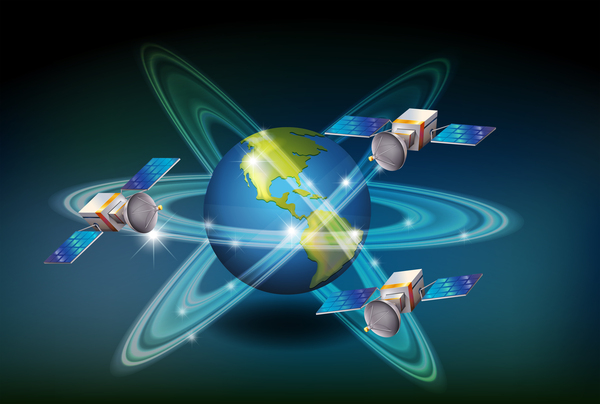Notifications
ALL BUSINESS
COMIDA
DIRECTORIES
ENTERTAINMENT
FINER THINGS
HEALTH
MARKETPLACE
MEMBER's ONLY
MONEY MATTER$
MOTIVATIONAL
NEWS & WEATHER
TECHNOLOGIA
TV NETWORKS
VIDEOS
VOTE USA 2026/2028
INVESTOR RELATIONS
DEV FOR 2025 / 2026
ALL BUSINESS
COMIDA
DIRECTORIES
ENTERTAINMENT
FINER THINGS
HEALTH
MARKETPLACE
MEMBER's ONLY
MONEY MATTER$
MOTIVATIONAL
NEWS & WEATHER
TECHNOLOGIA
TV NETWORKS
VIDEOS
VOTE USA 2026/2028
INVESTOR RELATIONS
DEV FOR 2025 / 2026
 james anderson -
6 hours ago -
Technology -
satellite internet service provider
-
12 views -
0 Comments -
0 Likes -
0 Reviews
james anderson -
6 hours ago -
Technology -
satellite internet service provider
-
12 views -
0 Comments -
0 Likes -
0 Reviews

In today’s digital age, staying connected is more important than ever. Whether you’re working from home, streaming your favorite shows, or attending online classes, a reliable internet connection is a necessity. While urban and suburban areas enjoy a multitude of internet options, rural and remote regions often struggle with limited connectivity. This is where satellite internet service providers come into play, bridging the digital divide and delivering high-speed internet to areas where traditional wired connections can’t reach.
Satellite internet is a type of broadband connection that uses satellite technology to provide internet access. Unlike cable or fiber internet, which relies on ground-based infrastructure, satellite internet beams data from a satellite orbiting the Earth to a satellite dish installed at the user’s location. This allows users in even the most isolated areas to get online without the need for physical cables or telephone lines.
The process is relatively straightforward:
User Request: A request (such as opening a webpage) is sent from the user’s device to the satellite dish.
Uplink Transmission: The dish transmits this request to a geostationary satellite in orbit.
Relay to Ground Station: The satellite forwards the request to a ground-based network operations center (NOC).
Response Relay: The data is processed and the response is sent back the same way – from the ground station to the satellite, then to the user’s dish.
While there is a slight delay (latency) due to the long distance the signal must travel, modern satellite internet providers have made significant strides in minimizing this lag, making it suitable for most everyday tasks.
The biggest advantage of satellite internet is its availability. It can reach virtually any location, regardless of terrain or infrastructure. This makes it a lifeline for people living in rural farms, mountainous regions, islands, and other hard-to-reach areas.
Even in urban areas, satellite internet can serve as a reliable backup connection in case of outages in cable or fiber networks.
Recent advancements have drastically improved the speed and reliability of satellite internet. Some providers now offer speeds comparable to DSL or even lower-tier cable plans, with lower latency and more generous data limits.
When choosing a satellite internet provider, it’s important to consider the following factors:
Different providers offer different speeds, typically ranging from 12 Mbps to 100 Mbps. Make sure to choose a plan that supports your household’s usage needs—especially if you stream video, play online games, or work remotely.
Satellite internet plans often come with data limits. Some providers offer unlimited data with slower speeds after a certain threshold, while others offer plans with hard caps. Choose according to your usage habits.
You’ll likely need to purchase or lease a satellite dish and modem. Check what equipment is included and what the upfront costs will be.
Professional installation is typically required for satellite internet. Choose a provider with a good reputation for customer service and technical support.
Rural Homes and Cabins: For areas without access to cable or fiber, satellite internet may be the only viable option.
Mobile Homes and RVs: Portable satellite internet systems can be used on the road, making it ideal for digital nomads.
Emergency Services: In disaster-prone areas, satellite connections can provide vital communication links when terrestrial infrastructure is damaged.
Farms and Ranches: Agricultural operations often span large rural areas where wired connections are not feasible.
While satellite internet is a fantastic solution for many, it’s important to be aware of its limitations:
Latency: Even with modern improvements, satellite internet tends to have higher latency compared to cable or fiber.
Weather Sensitivity: Severe weather conditions like storms or heavy rain can temporarily impact the connection.
Higher Costs: Satellite plans can be more expensive than other types of internet, especially when factoring in equipment and installation.
The satellite internet industry is undergoing rapid evolution. Low Earth Orbit (LEO) satellite constellations, such as those being developed by major tech companies, aim to reduce latency and increase speeds dramatically. These networks involve thousands of small satellites orbiting closer to the Earth than traditional satellites, enabling faster, more stable connections.
As these networks become more widespread, satellite internet will not only be a solution for rural areas but also a competitive option in urban markets.
For those living in remote or underserved areas, satellite internet service providers offer a critical gateway to the digital world. Whether you're running a business, attending school online, or just trying to stay connected, satellite internet ensures that no one is left behind. By understanding the features, benefits, and limitations of this technology, you can make an informed decision and choose a provider that meets your needs.
